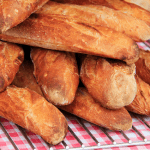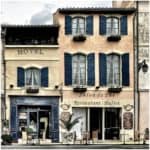Make the most of your time in this city of wine with our inside tips on planning your own Bordeaux itinerary.
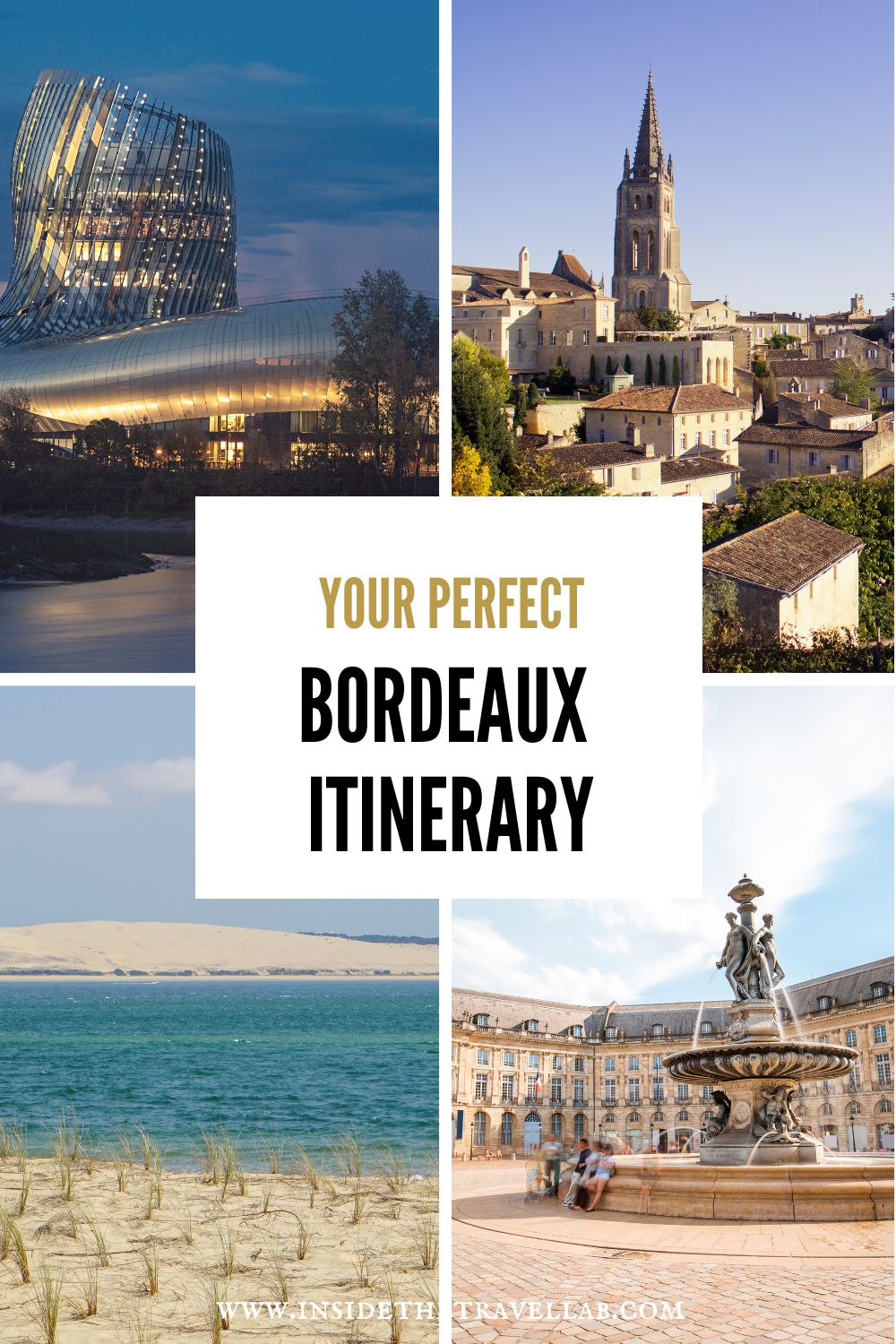
Planning Your Bordeaux Itinerary
Located in southwestern France, Bordeaux is known as the ‘capital of wine’ or the place to go for an amazing wine-tasting experience. Bordeaux wine is indeed special, and the castles and vineyards in the area will send you back to the times of queens and kings. But there’s so much more to Bordeaux than just its history as a wine region.
This city on the Atlantic coast has some of the most characterful streets in France, a beautiful mirroring pool, and two majestic cathedrals that pierce the skies with their pointy roofs. Oh, and you are still in France, even if you can’t spot the Eiffel Tower, so sugary boulangeries and patisseries abound.
If you are in a rush, you can see most of Bordeaux in two days as it is a small and walkable city. You can follow the map yourself but you’ll get more out of it with a guide. We’ve heard great things about this Free Walking Tour Bordeaux company, for example.
But if you can spare a couple more days, it will be worth it. Follow this itinerary to discover the main historic points in town and taste the wines of Bordeaux on a day trip to the nearby Saint-Émilion. Visiting with little-ones? Check out our guide to the best things to do in Bordeaux with kids.
Recommended
I love sharing the best travel resources I can find.
- I never book a flight without looking on Skyscanner first
- My favourite one stop shop for airport transfers, food tours & excursions is Get Your Guide
- Out of the big accommodation machines, I use Expedia and Booking.com the most
- I’ve hand-picked useful travel gear and tools for you in my Amazon shop. Never leave home without a travel adapter or collapsible water bottle. I’d also recommend these soft ear plugs and a sleep mask.
- Access all our planners and budget spreadsheets in the Travel Toolbox ©
- Plan the perfect road trip with our Road Trip Planner & Toolkit ©
- Use these packing cubes to make life so much easier on the road.
- Save on mobile phone roaming charges with an eSIM from Airalo.
When is the Best Time to Visit Bordeaux?
Visiting in the summer, between June and August, guarantees you sunny days, but also large crowds. If you want to see the main attractions at a slower pace, you can book your trip between May and the beginning of June or spend a few days in Bordeaux in September or early October, when you can attend the grape harvest.
How To Get to Bordeaux
Bordeaux is approximately 600 kilometres from Paris and well connected to most big cities in France, so getting there is easy. You have multiple transport options that can fit your budget and way of travelling.
By Plane
By far, the fastest and simplest way to get to Bordeaux is to fly. The Bordeaux-Merignac International Airport (BOD) also receives international flights, so check their website to see if you can fly from home directly to Bordeaux.
By Train
If you are departing from Paris or Toulouse, then as an added bonus, taking the train will offer you spectacular views. The trains in France are comfortable and fast, so you will arrive at your destination refreshed and ready to go. From the train station, you can use public transport to quickly reach the city centre.
However, if you are travelling from Nice or other cities in the southeast of France, taking the train is not a good idea as the rail networks don’t link together all that well here.
By Bus
Buses travel daily from Toulouse to Bordeaux at cheap prices, and the rides are no longer than 3 hours. Bordeaux is linked by bus to other large cities as well, but the trips are long and tiring, taking from 5 to 14 hours, so this option is not too comfortable if you are travelling from towns that are far on the map.
By Car
This option allows you to drive around France and make stops whenever you find something interesting. You can also rent a car in Bordeaux and use it to tour the surroundings.
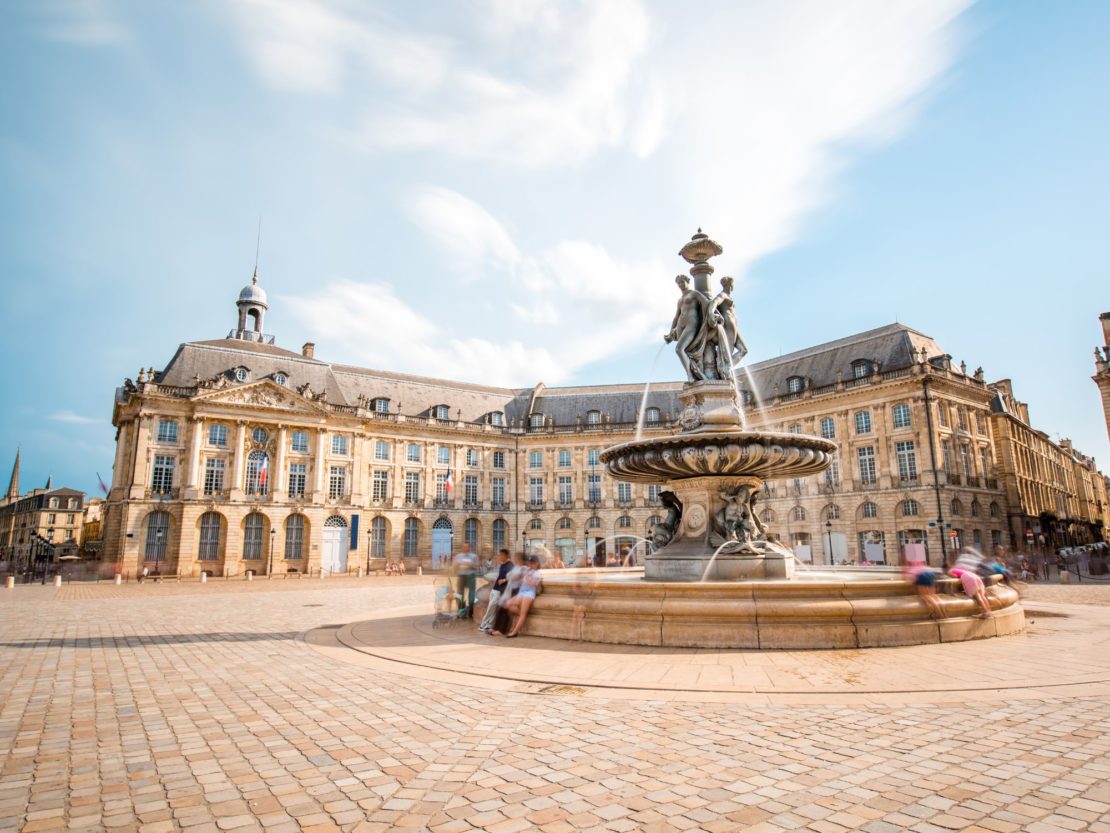
Day 1 – Bordeaux City Centre
If you are visiting Bordeaux for the first time, you will want to hit all the main attractions, so you should consider buying a Bordeaux city pass that will get you into most museums.
Taking a walking tour with a local guide will also bring you lots of information about the city, but you can have a great experience on your own if you read a bit about everything.
Start your first day in Bordeaux in the heart of the city. You will be walking a lot, so make sure to wear comfy shoes.
Place de la Comedie
Place de la Comedie is where the main streets in Bordeaux converge, including the longest pedestrian shopping street in Europe, Sainte Catherine. It is a lovely plaza crossed by trams and lined with terraces where you can grab a coffee before you hit the streets and stock up on beautiful souvenirs from France.
Grand Théâtre
The main attraction on Place de la Comedie is the Grand Theatre of Bordeaux, considered one of the most beautiful theatres in the world. Inaugurated in 1780, this piece of artwork designed by architect Victor Louis doesn’t cease to amaze with its ancient-mythology-inspired façade and incredibly luxurious interior.
Nine muses and three goddesses guard the entry to the foyer, where a grand staircase leads the way to the performance hall. The auditorium is dressed in the colours of royalty: blue, white, and gold. The dome was decorated by Jean-Baptiste Robin with an allegoric painting of Apollo and the muses and it was completed by a heavy chandelier holding 400 lights.
Great artists have performed at the Grand Theatre of Bordeaux, including Liszt, Duprez, Cinti-Damoreau, Viardot, Placido Domingo, and Cecilia Bartoli.
The theatre offers guided tours, but they are not available every day, so book one on their website to make sure you can see the interior.
Place des Quinconces
Next on our itinerary is Place des Quinconces, famous for its Monument aux Girondins. Located on one of the river banks of Garonne, the plaza is flanked by trees on both sides, which are arranged in staggered rows, forming a ‘quincunx’ – hence the name.
As you turn around the square, you will see statues of the world-renowned Bordeaux philosophers Montaigne and Montesquieu and, across Garonne, two rostral columns holding statues dedicated to Bordeaux’s commercial and maritime activities.
Place des Quinconces is where the main events in Bordeaux happen, so depending on when you visit, you may find a fair, a circus, or an artistic event taking place here.
Monument aux Girondins
Dominating the Esplanade de Quinconces, this monument is a tribute to the Girondins, a group of intellectual anti-royalists from the 18th-century Gironde (Bordeaux is its capital) who were an active element of the French Revolution.
The monument consists of a 43m high column, on top of which stands a version of the statue of liberty breaking the chains of her incarceration. At the bottom of the column, there’s a huge ornate fountain which reminds you a bit of the Trevi Fountain in Rome.
Place de la Bourse
The area on the bank of the river Garonne is known as Port de la Lune and was declared a UNESCO World Heritage Site in 2007. It is a magnificent place with splendid 18th to 20th-century architecture, culminating with Place de la Bourse, one of the most spectacular squares in all of France.
Miroir d’Eau
The best place to take a dreamlike photo is in front of the three buildings framing Place de la Bourse when Miroir d’Eau is reproducing them completely. You are looking at the biggest reflecting pool in the world, designed to work according to a specific cycle. The slabs forming it are covered with two centimetres of shining water, which is then drained through a special system. When the slabs are almost completely dry, the fountain mechanism releases plumes of mist, chilling the place.
If you are not afraid of getting a bit wet, feel free to walk through the mist or dip your feet in the water. The locals do it all the time to escape the heat of summer.
The Fountain of the Three Graces
Do not leave the square before taking a good look at the Three Graces fountain added in 1879. It was designed by Louis Visconti and represents Zeus’ daughters, Thalia, Euphrosyne, and Aglae symbolising good cheer, mirth, and splendour.
Saint-Pierre District
Saint Pierre is Bordeaux’s old quarter, with buildings dating back to 1760. It is a great place to grab a snack or sip a lemonade at one of the many terraces before heading on to the next attraction.
Porte Cailhau
One of the oldest structures in town, Porte Cailhau dates back to 1494 and was built to celebrate Charles VIII’s victory at Fornovo in Italy. Climb to its top for a wonderful view of the Pont de Pierre and an interactive lesson on stone masonry.
Pont du Pierre
Linking the historic centre with the newest part of the city, Pont du Pierre is one of the most romantic places in Bordeaux, especially if you visit it after sunset when the street lamps lead your way across the bridge.
Here, every two years in May, the Bordeaux River Festival takes place, which is one of the best things to watch on the Garonne River, with displays of historic ships and fireworks.
Saint-Michel Quarter
Not as touristy as the rest of the city centre, the Saint-Michel district is still an iconic piece of Bordeaux, part of the UNESCO World Heritage Site since 1998. It is the best place to meet locals whilst shopping or enjoying a coffee at one of the charming terraces.
You can have a wonderful time at the Saint-Michel market, where you can shop for almost everything from clothing to books or hit one of the many brocantes (second-hand markets) in Bordeaux. You will find many good things to take home with you, but prices can be quite spicey during the week, so it is best to wait for more brocanteurs to show up around Saint-Michel church at the weekends.
Saint-Michel is also a great place to hit a boulangerie or sip on a mint tea. At night, the wine bars open with a phenomenal selection. Some even allow you to order half a glass, so you can sample more brands and varieties.
Basilica of Saint-Michel
The Saint-Michel church was built at the turn of the 15th century in the Gothic Flamboyant style and is located close to Pont de Pierre. A 114-metre tall tower completes it, making it the tallest building in town and the second tallest church in France. The tower, known as La Flèche, is home to a big bell, so heavy that the initial structure wasn’t strong enough to sustain it.
The interior isn’t too different from the other churches in France, but Saint-Michel is worth visiting for its stained-glass windows and the catacombs lying under it, which weren’t discovered until 1881.
Grosse Cloche
Next on your Bordeaux itinerary, the Grosse Cloche is a huge bell tower that used to function as a prison. It houses an 8.6-ton bell, which is so powerful, it makes the windows in the area rattle when it rings.
You can visit the tower and the small 15th-century church next to it. There’s a very cool inscription on the bell’s edges, and it even has a name. However, you will need to be in Bordeaux on a special occasion to hear Armande-Louise sing.
Place de la Victoire
This square is the student’s meeting place in Bordeaux, with a more laid-back atmosphere and plenty of cafes and terraces. It is a nice area to rest your feet whilst admiring the classical-style façade of the University of Bordeaux or the marble column in the centre, which celebrates Bordeaux as a renowned wine region. Next to the column, a bronze tortoise reminds visitors of Bordeaux’s slow but steady growth.
Cross through the Porte d’Aquitaine to enter the famous Rue Sainte-Catherine with its multitude of shops and restaurants.
Cathedral Saint-Andre
The Roman Catholic Cathedral of Saint-André or the Bordeaux Cathedral, as most locals know it, dates back to the 11th century, although only a wall of the nave was preserved from the original construction. Most of the building standing today was rebuilt in the 14th and 15th centuries.
The Cathedral of Bordeaux, together with the Pey Berland Tower, is listed as a French national monument for its historic importance. It was here where in 1137, Eleanor d’Aquitaine married Prince Louis VII, just a few months before they became King and Queen of France.
Explore the splendid interior of the cathedral and, if you have good lungs, climb the 229 steps of the Pey-Berland tower for another magnificent view of the city.
Place Gambetta
On your way to Place Gambetta, cross Porte Dijeaux, an 18th-century gate built to honour future King Louis XVI. Gambetta square was renovated in the past years to become greener and more pedestrian-friendly, so today, you can enjoy it without looking out for cars.
Museum of Aquitaine
End your tour at the Musée d’Aquitaine, where you will be in for a great history lesson about Bordeaux and Aquitaine. The biggest attraction is the tomb of the famous philosopher Michel de Montaigne located in the 16th-century Bordeaux room. Check out the 20th and 21st century rooms for an interactive experience, but don’t skip the 18th and 19th-century rooms, as here is where the most fascinating artefacts are.
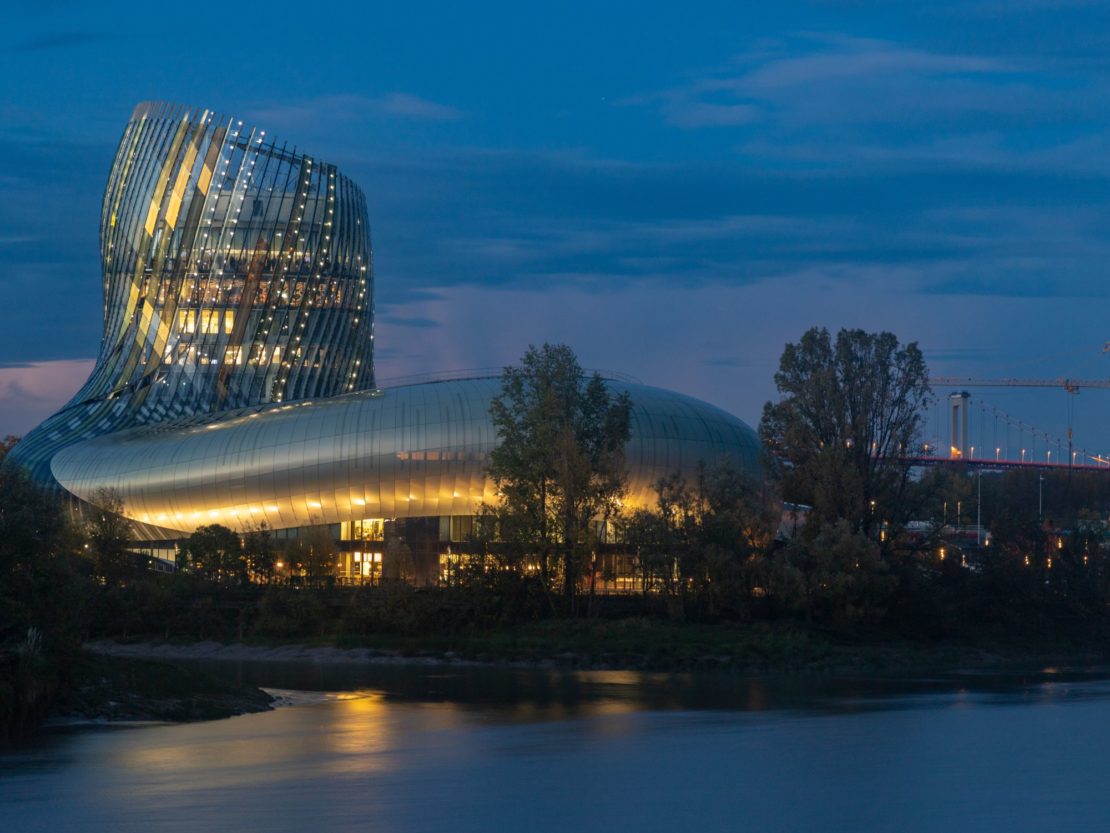
Day 2 – Bordeaux as a Wine and Food Paradise
Dedicate the second day of your 4-day Bordeaux itinerary to discovering its history as a wine region and tasting the culinary delights it offers.
La Cité du Vin
Bordeaux has a delightful wine museum where you can learn about the wines in the region. The building itself is a masterpiece shaped like a wine decanter that is often a favourite for social media photos.
You can easily spend a full day here as the venue is huge, with sections dedicated to the wines of the world and the history of making wine. You can sample wines, watch documentaries, read about famous vineyards in a dedicated room, or visit the temporary art exhibitions held on the premises.
The museum also has a great gift shop that sells white and red wines, along with splendid photography and art albums and books.
Chartrons District
Bordeaux’s posh quarter, Chartrons, reminds people quite a lot of the Marais in Paris and is the place to be if you want to shop for antiques or eat at a luxury restaurant. Stroll on Notre Dame Street, taking in the magnificent scent of wisteria and jasmine that climb, and stop for a glass of white wine outdoors in the lovely Chartrons square.
Next, make a stop at Cabane Cent Un for a plate of oysters or head to El Nacional for some mouthwatering spinach beignets. If you are craving gourmet pastries, then the place to visit is Micheline and Paulette.
Even though you are in the city of wine, there’s always room for a good beer, so head to the Zytho on Latour street for a cold bottle and a nice atmosphere.
Marché du Quais
If it’s Sunday and you are in Bordeaux, this should be the first thing on your list. Marché du Quais gathers more than 60 local farmers and produces on the left bank of the river Garonne. It is a fabulous local market selling almost everything, from local wines to cider, cheese, vegetables, fruits, and artisan beer.
Freshly made dishes are also on display, a great opportunity to get a taste of traditional Bordeaux cuisine. If you fancy something more out of this world, try the figs stuffed with foie gras.
Jardin Public
End your second day in this huge park. It dates back to the 18th century and is a true oasis of peace, housing an arboretum, a museum of natural history, and a library. Locals come here to escape the rush and heat of the city, especially during the summer when Bordeaux becomes a magnet for tourists.
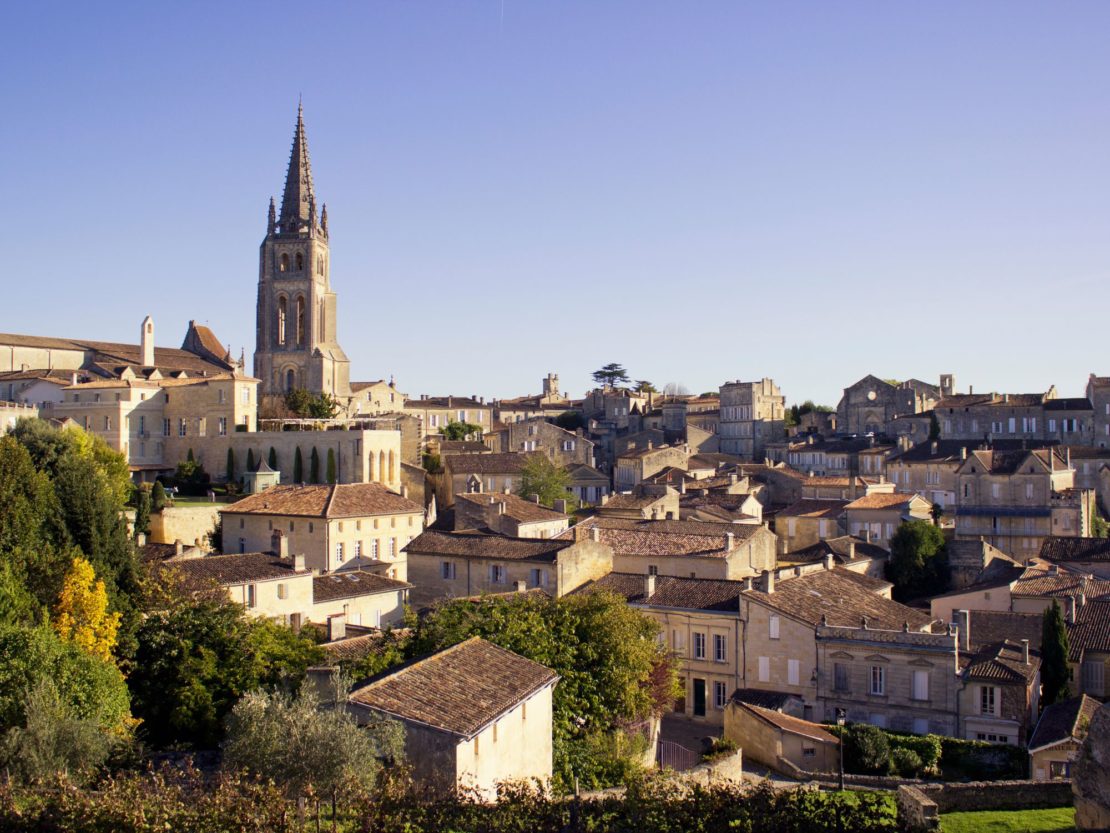
Day 3 – Wine Tasting Day Tour to Saint-Émilion
No-one should leave the region without making a day trip to one of the nearby villages: the stunning Saint- Émilion.
The picturesque village of Saint-Émilion, located in one of the best wine regions in the country, is home to three splendid wine estates. Prepare for a complete immersion in the culture of Aquitaine, complete with wines, cheeses, and fruits.
Château Cantenac
Owned by the Roskam-Brunot family for four generations, the estate, truly is an exceptionally beautiful place. Tours are run by one of the family members and include a detailed guide on the vineyard, winemaking process, and wine ageing, ending with a tasting session that may involve three to four wines. You can even have an excellent lunch here with local produce and great company.
Château Fombrauge
Another famous vineyard in the Bordeaux region, Château Fombrauge is surrounded by over 58 hectares of vines and is famous for its Merlot, Cabernet Sauvignon and Cabernet Franc grape varieties. The harvesting and winemaking processes are fully manual, so it is a delight to visit this place in autumn and see the harvesters collecting the grapes the old-fashioned way.
The venue was a former Carthusian monastery and became a wine estate in the 16th century. The host will offer you a tour of the domain with a visit to the cellar, followed by either the standard or exceptional wine tasting package, depending on which you have chosen.
Château La Dominique
Château La Dominique offers a more modern approach to winemaking, combining the latest equipment and techniques with the traditional recipes that made the place famous. It is owned by the Fayat family, who drive forward its futuristic gaze.
The tour is a delight, as the estate itself is a genuine work of art. You can visit the family’s private wine collection, the cellar, and the many barrel rooms. There’s also a terrace where you can have a glass of wine and lunch.
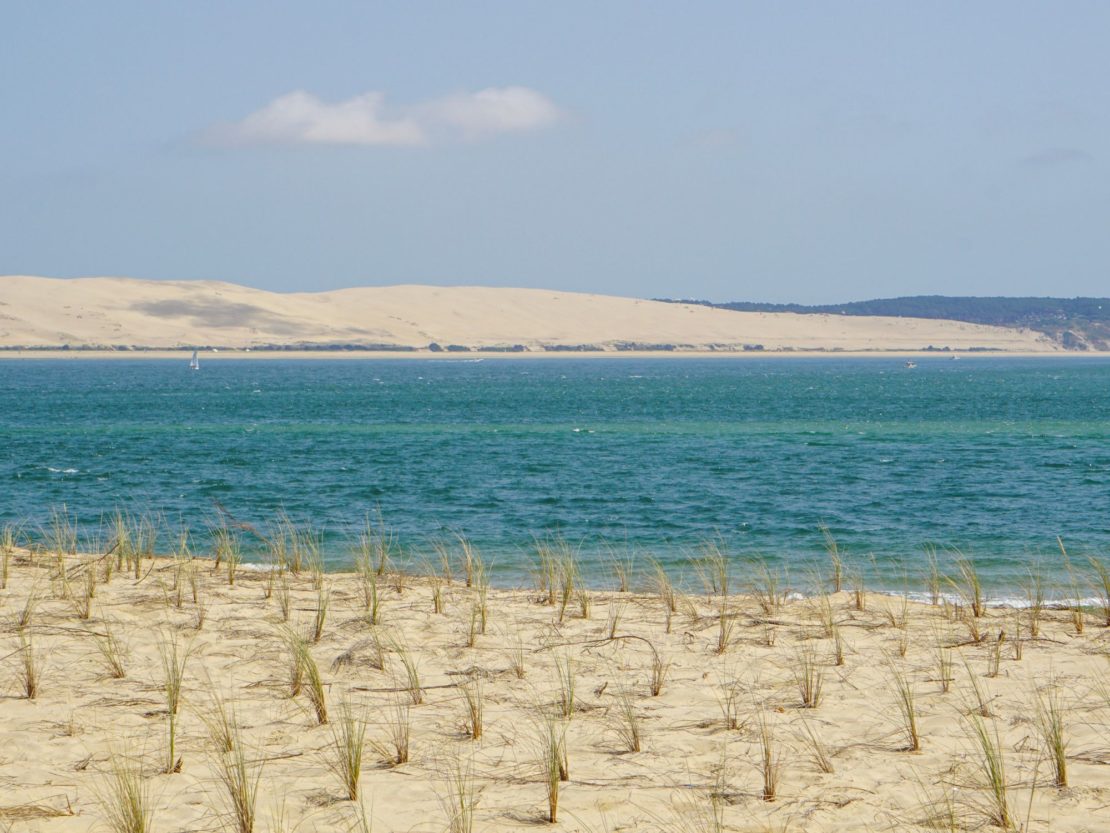
Day 4 – Dune du Pilat
Dune du Pilat is the highest dune in Europe and is just one hour from Bordeaux. If you are touring the surrounding areas, this is, without a doubt, a place you don’t want to miss. Perfect in the morning and evening, when the sand becomes cooler, it is a delight to explore on foot. Beach activities are also popular in the area, and photographers will love the pine cloaked landscape.
Where to Stay in Bordeaux
Even if Bordeaux is a walkable town, it’s always best to be in the middle of things. The following hotels combine an excellent location with great service and comfortable rooms:
- Best Western Grand Hotel Francais – located only 0.3 km from Saint André Cathedral, this 3-star hotel is clean and offers one of the best breakfasts in town.
- Quality Hotel Bordeaux Centre – offers modern rooms with large bathrooms and comfortable beds; there’s also a nice restaurant on the premises with excellent food options.
- Hotel de Seze – a more luxurious hotel offering fine dining and spa facilities. It is located right in the centre of Bordeaux.
More On Travel in France
Discover plenty of unusual things to do in France with our unique look at the country and this list of interesting facts about France. Still keen to know more? Find out what France famous for here.
More On Travel in Paris
We hate tacky souvenirs, but as you’d imagine, France offers something a little more chic in terms of the souvenirs you can find in Paris. Finally, have you seen and done everything we’ve mentioned here? Then it’s time to check out our guide to unusual things to do in Paris here. Finally, check out our guide to visiting Paris with kids.


